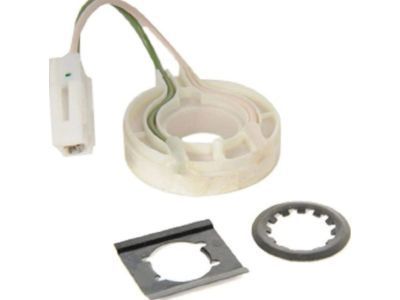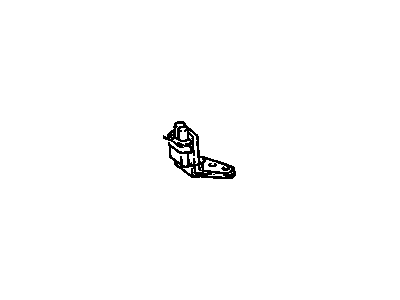My Garage
My Account
Cart
Genuine GMC Jimmy Ignition Coil
Ignition Coil Resistor- Select Vehicle by Model
- Select Vehicle by VIN
Select Vehicle by Model
orMake
Model
Year
Select Vehicle by VIN
For the most accurate results, select vehicle by your VIN (Vehicle Identification Number).
5 Ignition Coils found
GMC Jimmy Distributor Ignition Pickup
Part Number: 10495089$26.43 MSRP: $49.86You Save: $23.43 (47%)Ships in 1-3 Business DaysGMC Jimmy COIL ASM,IGN
Part Number: 19418996$73.64 MSRP: $154.70You Save: $81.06 (53%)Ships in 1-3 Business DaysGMC Jimmy COIL KIT,IGN
Part Number: 19418995$52.07 MSRP: $109.38You Save: $57.31 (53%)Ships in 1-2 Business Days
GMC Jimmy Ignition Coil
The Ignition Coil in GMC Jimmy vehicles is arguably one of the most vital devise that plays the role of translating the low voltage from the battery to high voltage power that is required to combust the air/fuel mixture in the cylinders. This is an induction system that entails two separated coils of insulated copper wire namely the primary coil and secondary coil with an iron core-environment within a housing. This differs based on the ignition system used in the car, for instance, the distributor ignition, the coil on plug, and wasted spark systems all have different techniques of getting the high voltage to the spark plugs. Various symptoms include no start or rough running, poor performance, and fuel economy decline when the ignition coil fails. Thus, it is critical to maintain and inspect the coil's resistance and voltage constantly to maintain the engine's performance.
Each OEM GMC Jimmy Ignition Coil we offer is competitively priced and comes with the assurance of the manufacturer's warranty for the part. Furthermore, we guarantee the speedy delivery of your orders right to your doorstep. Our hassle-free return policy is also in place for your peace of mind.
GMC Jimmy Ignition Coil Parts Questions & Experts Answers
- Q: How to check and remove the Ignition Coil on GMC Jimmy?A: To check the High Energy Ignition System (HEI), begin by disconnecting the battery's negative terminal. Test the coil for opens and grounds. On the high scale, connect the ohmmeter leads; it should show a very high or infinite resistance value. On the low scale, check the coil's primary resistance, which should indicate a very low or zero resistance value. Also, check the coil's secondary resistance on the high scale; it should not show an infinite resistance. If any values are off, replace the coil. For removal, unplug the coil's high-tension wire and electrical leads, and remove the mounting nuts to take out the coil. The installation process is the reverse of removal.
- Q: How to check and replace the pick-up coil on GMC Jimmy?A: To check the ignition coil, start by connecting one lead of an ohmmeter to the terminal of the ignition coil lead and the other lead to the ground. Flex the leads by hand to check for intermittent opens, and the ohmmeter should always indicate infinite resistance. If it doesn't, the ignition coil is defective and needs to be replaced. Next, connect the ohmmeter leads to both terminals of the ignition coil lead and flex the leads by hand again. The ohmmeter should read a steady value between 500 and 1,500 ohms as the leads are flexed. If it doesn't, the ignition coil is defective and should be replaced. To remove the ignition coil, start by detaching the cable from the negative terminal of the battery. Then, remove the Distributor cap and rotor, and if necessary, remove the distributor itself. Remove the spring clip from the distributor shaft and mark the distributor tang drive and shaft for reassembly. Set the distributor in a vise with a shop rag to protect the shaft, and use a hammer and punch to remove the roll pin from the distributor shaft and gear. Lift the ignition coil assembly straight up and remove it from the distributor, noting the order in which the pieces were removed. Reassembly is the reverse of disassembly.
Related GMC Jimmy Parts
Browse by Year
2001 Ignition Coil 2000 Ignition Coil 1999 Ignition Coil 1998 Ignition Coil 1997 Ignition Coil 1996 Ignition Coil 1995 Ignition Coil 1994 Ignition Coil 1993 Ignition Coil 1992 Ignition Coil 1991 Ignition Coil 1990 Ignition Coil 1989 Ignition Coil 1988 Ignition Coil 1987 Ignition Coil 1986 Ignition Coil 1985 Ignition Coil













